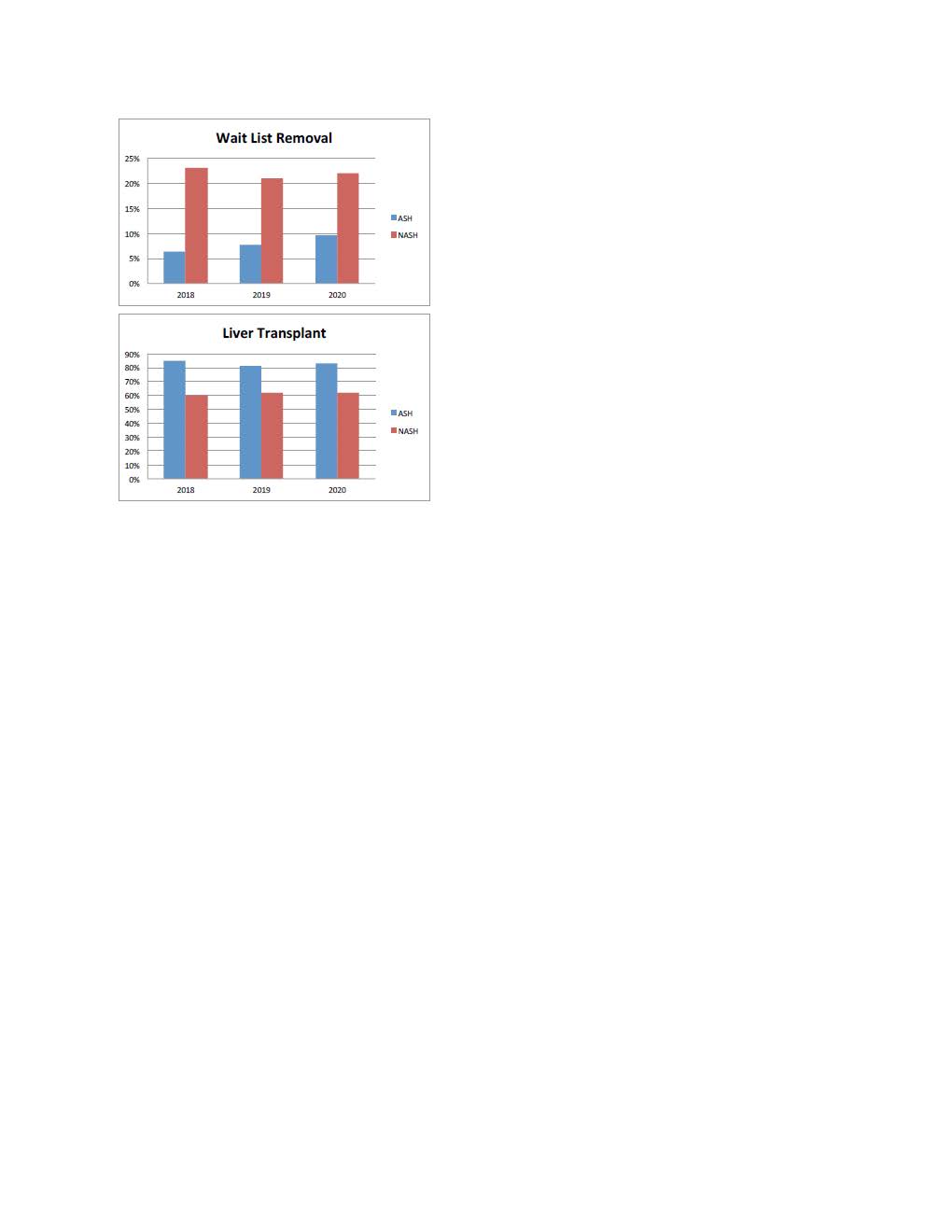The Paradox of Lifestyle – Related Liver Disease: ASH and NASH
1Transplant Hepatology, Tampa General Hospital, Tampa, FL, 2Transplant Surgery, Tampa General Hospital, Tampa, FL
Meeting: 2022 American Transplant Congress
Abstract number: 1196
Keywords: Hepatitis, Liver transplantation, Obesity
Topic: Clinical Science » Organ Inclusive » 70 - Non-Organ Specific: Disparities to Outcome and Access to Healthcare
Session Information
Session Name: Non-Organ Specific: Disparities to Outcome and Access to Healthcare
Session Type: Poster Abstract
Date: Sunday, June 5, 2022
Session Time: 7:00pm-8:00pm
 Presentation Time: 7:00pm-8:00pm
Presentation Time: 7:00pm-8:00pm
Location: Hynes Halls C & D
*Purpose: In the last decade, the burden of lifestyle-related chronic disease has been on the rise and is considered a growing serious public health concern. In recent years, the obesity epidemic and the high prevalence of harmful alcohol consumption parallels the increasing new waitlist additions for NASH (Non Alcoholic SteatoHepatitis)-Cirrhosis and Alcohol-related liver disease respectively with exception of the subset with high short-term mortality -Alcohol Hepatitis (ASH) which remained controversial until the findings of the ACCELERATE (American Consortium of Early Liver Transplant for Alcoholic Hepatitis) trial in 2018 showed favorable outcome with low relapse rate. Therefore the aim of the study was to evaluate the impact of lifestyle-related liver disease on waitlist and Transplant Dynamics in the USA.
*Methods: Using the UNOS database, we identified all adult candidates (>18 years) who were added to the waitlist and all candidates who received liver transplants during the study period (2016 – 2020). Data extracted included diagnosis, MELD score, age, gender, and ethnicity. Chi-Square and ANOVA tests were used for comparative analysis.
*Results: Overall, during the study period (2016 – 2020), among waitlist additions, there were 11,969 candidates with a diagnosis of either NASH-Cirrhosis or ASH and 7130 candidates with either NASH-Cirrhosis or ASH who received liver transplantation. The study population was predominantly Caucasian, and the ASH candidates were of a younger age group. In 2018, we observed a 2.75 fold increase in waitlist addition for ASH with a steady increase thereafter while no significant change was observed in the NASH group. Waitlist removal due to death or too sick for transplantation was significantly higher in the NASH group (21.9 % versus 8.3%, p = 0.0001) but liver transplantation was significantly lower (61.2% versus 83%, p= 0.0001) in the NASH group compared to ASH.
*Conclusions: Our study shows the disparate outcomes of the most common lifestyle-related liver diseases (NASH and ASH). The increasing trend of these preventable liver diseases and the significant variation in outcomes is a public health concern. Public health policies focusing on this silent epidemic and further research examining the equity in access and outcomes in transplantation will be invaluable as we tackle this public health threat.
To cite this abstract in AMA style:
Kemmer N, Buggs J. The Paradox of Lifestyle – Related Liver Disease: ASH and NASH [abstract]. Am J Transplant. 2022; 22 (suppl 3). https://atcmeetingabstracts.com/abstract/the-paradox-of-lifestyle-related-liver-disease-ash-and-nash/. Accessed December 26, 2025.« Back to 2022 American Transplant Congress

